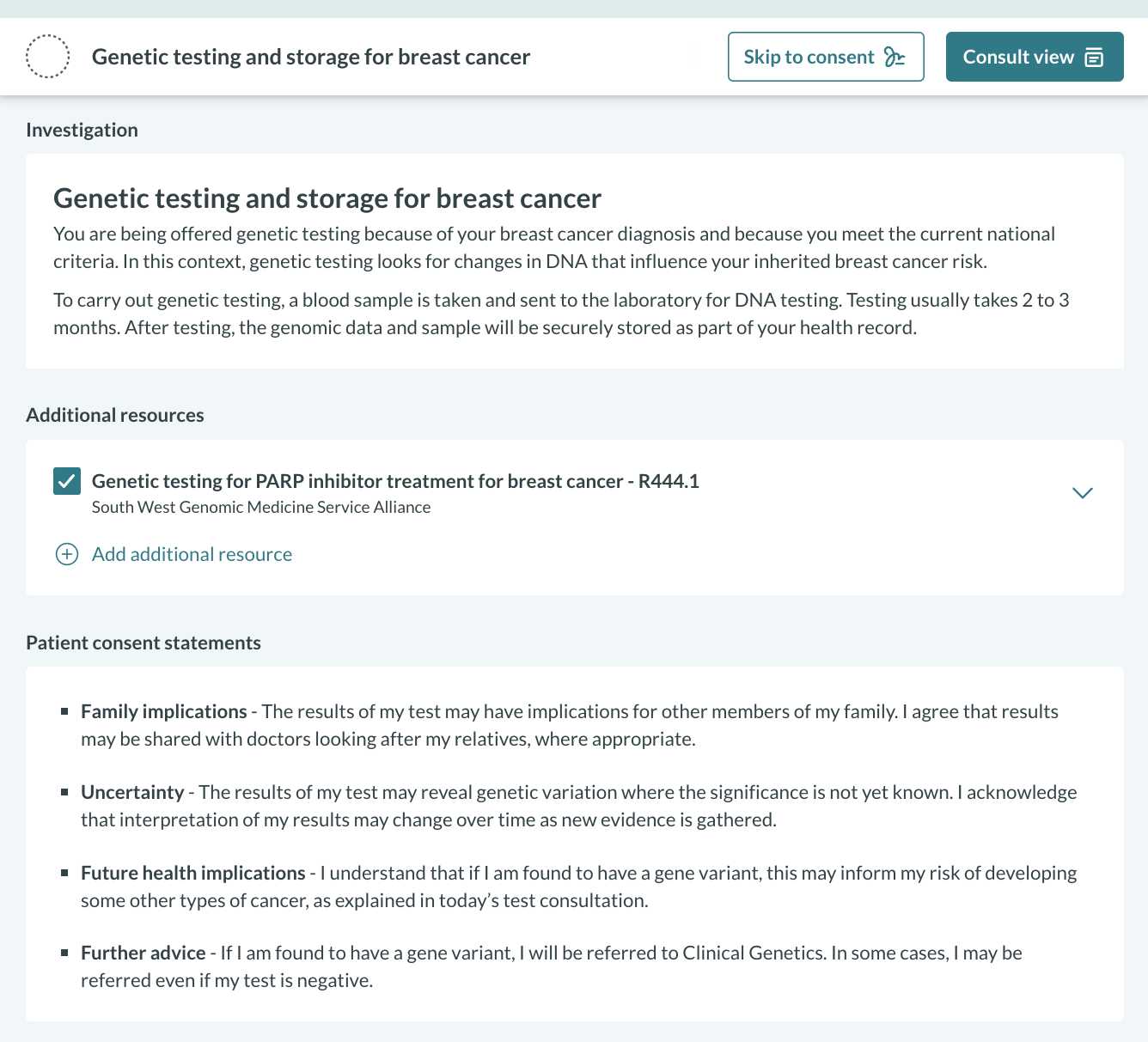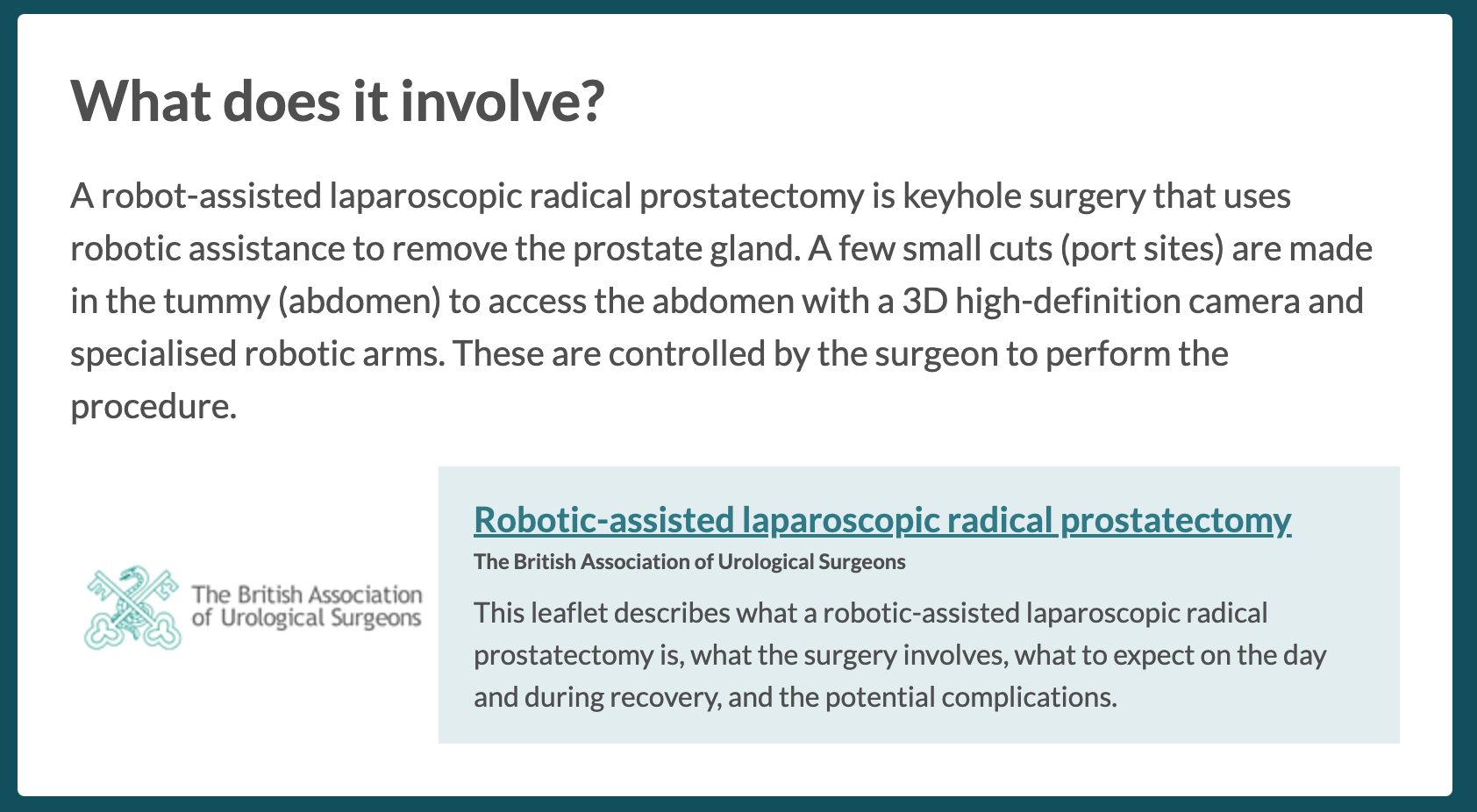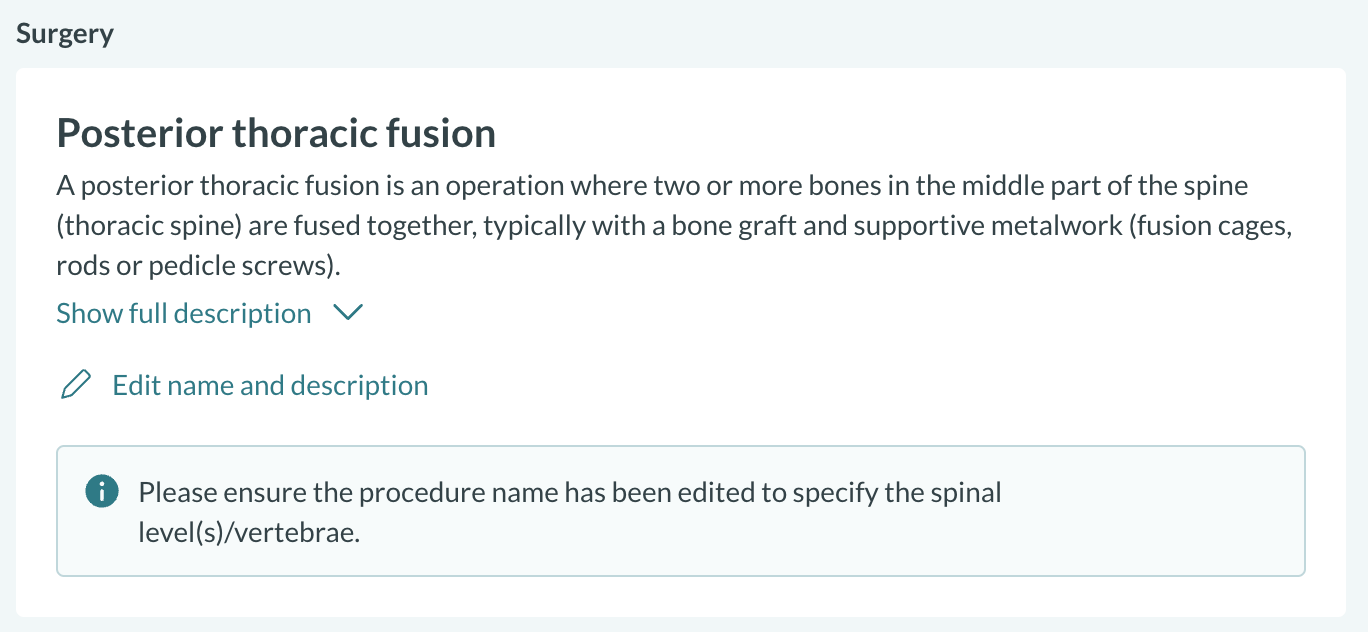Until now, all consent templates within Concentric have had the same overall structure, including the documentation of the reason for treatment, alternatives, and the risks involved. This structure doesn’t work for all consent scenarios, which has led to organisations running a parallel process for some types of consent, such as genetics and medical photography consent.
Release 88 introduces a new type of consent template that does not include the indication, purpose, alternative, anaesthetic options, and risks sections but otherwise follows the familiar structure and workflow. As an example, the genetic consent below uses this new consent type. It includes a description of the test, links to additional resources, and bespoke consent statements. The elements that are not relevant in this context, such as anaesthetic options and risks presented by timing and likelihood, are removed.

Default treatment links
Previously, if desired, you’ve needed to select additional resources to share within clinician view. From your feedback, we know that you often want to share specific resources with every person having a procedure, for example, a link to patient information from the relevant Royal College or National Association. These can now be added by default to treatment information (i.e. don’t need to be selected), presented alongside the lay description:

Clinician view guidance banners
Two new guidance banners can be used in clinician view, supporting clinicians to consider what template information may need amending for the individual patient.
Treatment banners are presented within the first section of clinician view and can be used as a patient safety nudge that the procedure name needs editing. For example, to state which digit or spinal level is being operated on:

When researching risk profiles, our ontology clinicians encounter scenarios where the risk profile differs depending on patient factors. Historically, it’s not been possible for us to convey this context to a clinician within clinician view. Risk banners can now be added, describing modifications that may be appropriate:
